In this episode, you can learn to make a hanging mobile in the style of Alexander "Sandy" Calder.

|
|
 |
| |
|
|
Step 1 |
|
|
Soak the wooden dowels in water for 15-30 minutes. |
|
 |
| |
|
|
Step 2 |
|
|
Place the dowels in a ‘form’ to shape them.
* Stair railing or the slats on the back of chairs works well for short dowels. |
|
 |
| |
|
|
| * Longer dowels can be formed in the legs of two chairs. * Let all dowels dry completely before removing them. |
|
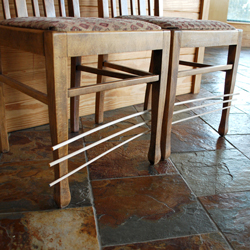 |
| |
|
|
Step 3 |
|
|
| Line the dowels up and draw a line across them about four inches (10 cm) in from one end. |
|
 |
| |
|
|
Step 4 |
|
|
| Lay out your mobile with the end of one dowel touching the mark on the next dowel. |
|
 |
| |
|
|
Step 5 |
|
|
| If any dowels need to be cut to fit your desired layout, use the rotary tool to do so. |
|
 |
| |
|
|
Step 6 |
|
|
| Place one swivel between the end of the dowel and the mark on the next dowel. |
|
 |
| |
|
|
Step 7 |
|
|
| Draw an X on the end of the dowel that will have the weight (clay shape) on it. |
|
 |
| |
|
|
Step 8 |
|
|
| Drill holes in all points that will be connected with a swivel. |
|
 |
| |
|
|
Step 9 |
|
|
| Cut a two-inch (5 cm) piece of wire for each hole that you drilled. * i.e. 7 holes = 7 pieces of wire. |
|
 |
| |
|
|
Step 10 |
|
|
| Feed one piece of wire into each hole, bending it in half and looping the ends over. |
|
 |
| |
|
|
Step 11 |
|
|
| Connect the wires on the dowels by looping a swivel over the ends of the wires and crimping with the pliers. |
|
 |
| |
|
|
Step 12 |
|
|
You can loop a keyring through the top swivel to make it easier to hang. |
|
 |
| |
|
|
Step 13 |
|
|
| Hang your connected dowels in a place that gives you easy access to them. |
|
 |
| |
|
|
| * Laying a broom across the back of two chairs works well for this. |
|
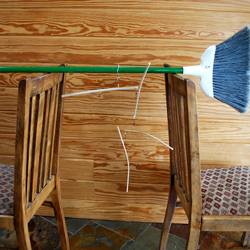 |
| |
|
|
Step 14 |
|
|
| Beginning with the bottom dowel, add blobs of clay to both sides until the dowel is balanced. |
|
 |
| |
|
|
Step 15 |
|
|
| When the bottom dowel is balanced, move to the next one up. |
|
 |
| |
|
|
| * Repeat step 15 until all of your dowels are balanced. |
|
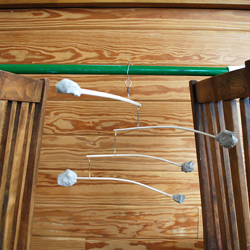 |
| |
|
|
Step 16 |
|
|
| Carefully remove your mobile and lay it on a flat surface. Shape your clay. |
|
 |
| |
|
|
Step 17 |
|
|
When your clay has dried completely, paint each clay shape. |
|
 |
| |
|
|
Step 18 |
|
|
| After your paint has dried, and before you hang your mobile, make sure each clay shape holds tightly to the dowels. |
|
 |
| |
|
|
Step 19 |
|
|
| If one is loose, remove it, place a dab of glue inside and then place it back on the dowel. |
|
 |
| |
|
|
Step 20 |
|
|
| When the glue has dried, hang your mobile. |
|
 |
| |
|
|
Here are a few examples of mobile layouts based on difficulty level. |
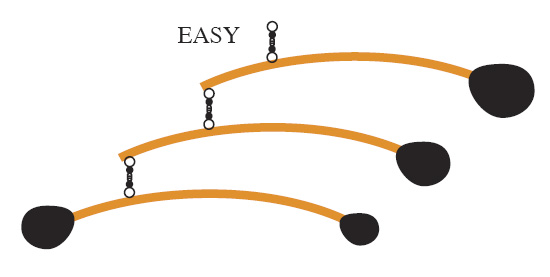 |
| |
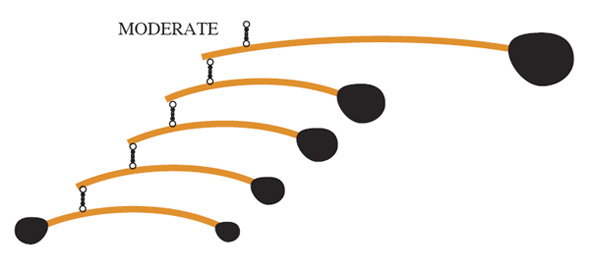 |
| |
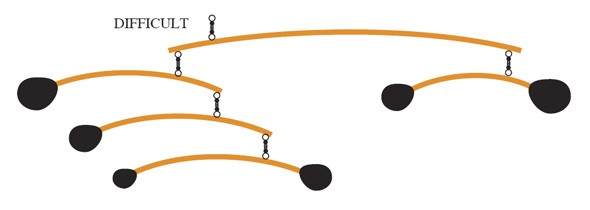 |
| |
Facts about Kinetic art |
- Kinetic art is art that contains moving parts or depends on motion for its effect. The moving parts are generally powered by wind, a motor or the observer.
- The first example of kinetic sculpture was credited to Marcel Duchamp, with his “Bicycle Wheel” produced in 1913. He mounted a bicycle wheel upside down on a bar stool. Originally Duchamp said that the piece wasn’t art, that he had just made it because he liked to look at the wheel spinning. It wasn’t until years later that he decided “Bicycle Wheel” was his first piece of kinetic art.
|
| |
Facts about Alexander “Sandy” Calder |
- Alexander Calder was born in Pennsylvania in 1898.
- He was an American artist and sculptor most famous for inventing the mobile (a type of kinetic art).
- Calder was fascinated by the circus and had his own circus which used moving toys that he made himself.
- “Sandy” is the Scottish nickname for Alexander. Calder’s grandfather was from Scotland.
- Calder’s sculptures and artwork can be seen around the world. One of his famous sculptures, WTC Stabile, was destroyed when the World Trade Center collapsed on September 11, 2001.
- Calder died in 1976.
|
|
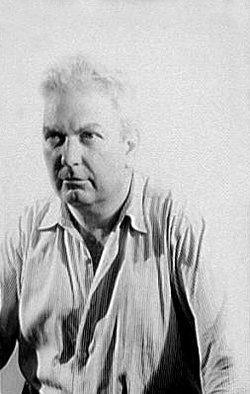 |
|

